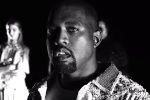Like most people, I cannot muster much else to say about the president. His disregard for human life is heinous. His idiocy is infuriating. To condemn him though is to beat a dead horse; to readdress the elephant in the room. Fortunately, Mary L. Trump, Donald’s niece, goes beyond mere criticism of the individual with her new memoir, “Too Much and Never Enough: How My Family Created the World’s Most Dangerous Man.” Instead, she reveals that corruption courses through the Trump bloodline.
As of midnight on Aug. 3, 2020, Donald John Trump had been president of the United States for three years, six months, one week, six days, twelve hours and you get the drill. With every passing second, from the stench of each septic tweet to the acidic policies burning holes in the fabric of society, Donald makes the country a tad less honorable. Being proactive in his self-humiliation, he doesn’t need anyone, family or otherwise to unmask him for the fraud that he is.
The fact that someone did is not only unnecessary; it is paradoxically just what the country needs right now. “Too Much and Never Enough” disparages not only the U.S. president but also an entire family that believes inequality is the best policy.
The book begins with a White House dinner in April 2017 honoring the aunts of the author, who sees Donald not only as president for the first time, but also the first time in eight years. Despite being her uncle, Mary writes it was on that day that “for the first time in my life, he hugged me.” It is this estrangement that makes her perspective all the more fascinating. She is an insider without an obligation, a rebel without a cause (except Biden’s victory in November). Aside from her authorial eccentricity, Trump also effectively sets up the melodrama that is to come through the blatant dysfunction on display.
It is also at this family gathering that we are introduced to the book’s de facto villain. On the president’s desk sits a photograph of Fred, the patriarch of the Trump household while Mary Anne, Fred’s wife (Donald’s mother), is conspicuously absent, only hinting at the division that belies nearly all relationships in the Trump family.
The deepest division of all was constructed by Fred himself, according to the author, a man who belittled his oldest son, Freddy (Mary’s dad), for his disloyalty to the family brand. Instead of taking up his rightful place as the heir to Trump Management, his father’s lucrative real estate business, Freddy became a TWA pilot or, as his younger brother would remark, “a glorified bus driver.” Rather than help his oldest son as he dealt with alcoholism, the Trump patriarch crafted a narrow purview through which materialized only one subject: the supposed leader of the free world.
What falls from that toxic combination of spite and admiration is Mary Trump’s thesis, that Fred created a monster out of money. When Donald’s Atlantic City experiment in the 1980s and 1990s accumulated mountains of debt, his father bailed him out. The banks followed in suit and continued to provide Donald with hundreds of millions of dollars in loans every year for endless mistakes. The lesson learned? Failure is profitable.
And yet Donald, even as he benefitted from all but his own labor, had the audacity to amend his dad’s will for personal gain and mock his father as he developed dementia. With such institutionalized safeguards against accountability, could one possibly be surprised that the administration is run by a narcissistic oaf?
Yet it is that same oaf who adds a welcome complexity to the memoir, specifically its dual project: to chastise the president and fulfill unfinished business. In the book, Mary Trump recalls the time that Donald hired her to write his third book, “The Art of the Comeback,” which wasn’t unique among his previous ghostwritten works. But aside from the title, she wasn’t given any guidance on what to include; she couldn’t even get her uncle to sit down for an interview.
In the end she was fired and replaced with someone more experienced. “I wasn’t upset,” she wrote. “The project had hit a wall. Besides, after all of the time I had spent in his office, I still had no idea what he actually did.” It is true here as much as anywhere else in “Too Much and Never Enough” that Mary wants us to consider that Donald may not do anything at all, neither in his business nor in the White House. At least when it comes to the latter, most people would probably agree that few activities beyond golf or manhandling a smartphone aren’t worth much of the president’s priceless attention.
To describe “Too Much and Never Enough” as scathing is accurate, but it’s more complicated than just a list of grievances. Rather than only retrace the insults piled onto the president as of late, she opts to also demonstrate the pathologies of Donald’s father, Fred, as a key catalyst for the delirious politician’s unmitigated transgressions. One could call her work, which amounts to a collection of family folklore, personal anecdote and political commentary, as a rushed cash-grab, lacking the detail that may have convinced the president’s base that democracy in America faces an existential threat under this administration. As sad as it is, the best audience for the book is probably a Democrat.
Yet to call Mary Trump money-hungry deeply discredits the courage of an author to throw themselves to the wolves right now. This is likely the most limelight she’s received in her life, which could have easily backfired and consigned her to perpetual censure by the American people. Already an outlier amid the First Family, it would make sense to stay quiet and weather the storm. Instead, she takes a bold stance against one of the most powerful men on earth.
There is a moment near the end of the volume that is unlike anything I’ve read recently. Within the book’s epilogue, the author imagines “the envy with which Donald watched Derek Chauvin’s casual cruelty and monstrous indifference as he murdered George Floyd.” Did your heart skip a beat? You’re not alone. However, it’s probably not out of skepticism; rather it is the possible truth of that jealousy that shocks the reader the most.
It is the extent to which Donald and his close family members embody the worst of humankind that largely contributes to that lump in our throat. As all who have supported the creature from the White House badger themselves to test and see if they have the coronavirus, each forgets that there is something else they’ve already tested positive for: delusion. “Too Much and Never Enough” reminds us that the current crises are exacerbated by the negligence of someone we should be able to trust, but who instead is charged with uncountable indignities.
In three months, we will decide who gets to control the reins of the nation next. Will it be cradled by an empathic geezer or driven off a cliff? For Trump, the outcome of this year’s election is not just a political one; it’s deeply personal.

















